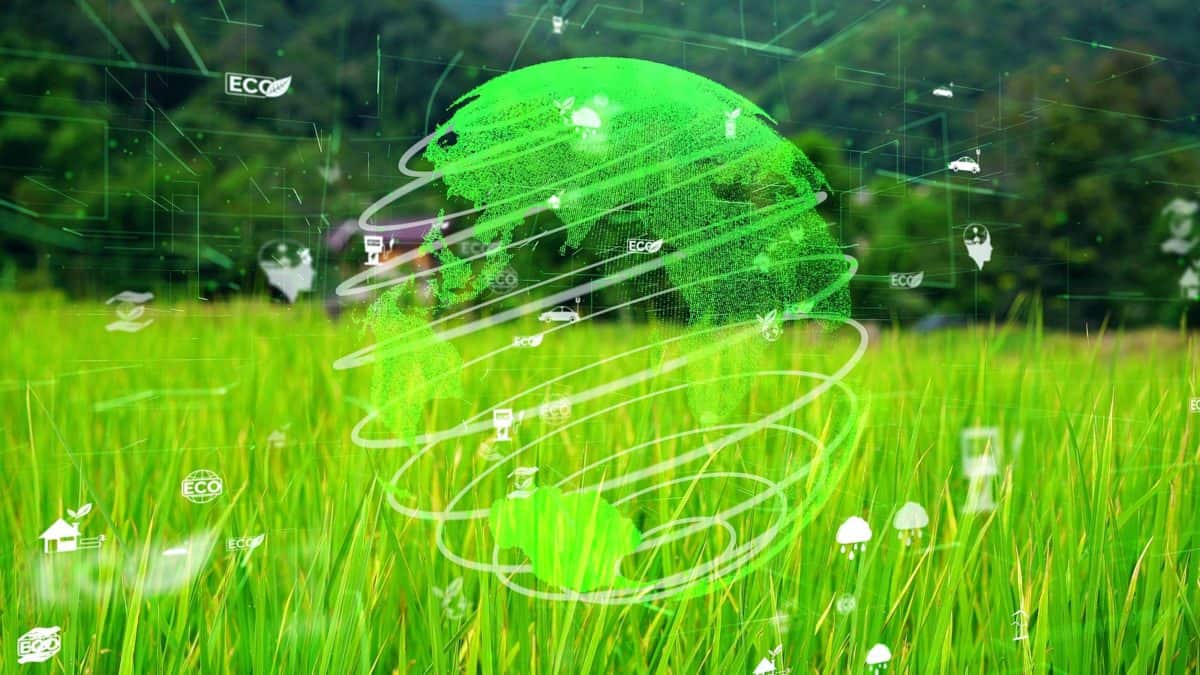
In discussing the idea of sustainability in March, we looked at waste management and the various treatment technologies available for hazardous and non-hazardous waste and provided examples of how Veolia looks at sustainability for their clients. Today, we will peel back another layer to come up with a formula for determining the ‘green’ value of waste treatment. Today, we will peel back another layer to come up with a formula for determining the ‘green’ value of waste treatment.
It’s important to understand the journey waste makes from the point of generation to its final disposal stop. Shortly after generating waste, your company probably contracts a company to remove and dispose of that waste. Representatives from that company come to your location, package the waste appropriately per USDOT and USEPA standards, and then haul the waste off to its next stop.
The first step in calculating the sustainability value of a waste disposal option is that first transportation leg. How far does the truck have to drive the waste? How much Carbon Dioxide (CO2) emissions are generated in that process? According to Jason Mathers, writing for the Environmental Defense Fund, the average truck generates 161.8 grams of CO2 per ton-mile (Mathers, 2021). The formula to calculate the CO2 emitted in this transportation is: multiply the weight of the waste by the number of miles and again by the freight truck emissions factor (161.8), then divide that product by one million to convert from grams to tons.
Next, we need to calculate the sustainability value of the receiving facility. Before we can do that, we need to understand whether this facility will be the final destination of the waste or is it an interim step:
- INTERIM STATION: Many waste companies have receiving facilities where the companies aggregate waste coming from multiple sources to build efficient transportation to the same destination. For these interim stations where no treatment or disposal happens, your waste vendor may be able to provide you with an average energy use per container or per pound of waste. After this step, you’ll need to run the transportation calculation above to track the emissions generated by transporting this waste to its next destination.
- TREATMENT LOCATION: If the receiving facility is a treatment location, the contractor should be able to provide an average energy used per pound of waste. In some cases, this may be a negative value. That’s because recycling and recovery operations generate products from waste, offsetting the need to create those products from raw materials. Energy from waste treatment is a great example of this. The waste sent to these facilities is incinerated to boil water which operates a turbine electricity generator. The waste burned at these facilities offset the need to use natural gas or other fuels to generate electricity. Since treatment and destruction are not disposal, once you’ve gathered the treatment sustainability value, you’ll then need to calculate the CO2 emissions for this waste to be transported to its final disposal destination.
- DISPOSAL FACILITY: If the receiving facility is the disposal facility, your contractor should be able to provide you with an average of energy used per pound of waste.
Once you have gathered all the kilowatt-hours of electricity, therms of natural gas, and CO2 emissions related to transportation and disposal of your waste, the simple EPA Greenhouse Gas Equivalencies Calculator can be used to create a scorecard for each disposal scenario. Including other factors such as: cost, insurance and compliance standing should help you make the best waste vendor choice for your organization. Pairing these calculations with other factors such as cost, insurance, and compliance standing will allow you to make the best waste vendor choice for your organization.
Let’s walk through an example of a common waste stream: one 4.5 cubic foot box of regulated medical waste. We will use MassBio as the waste generator at their address at 700 Technology Square in Cambridge, MA.
The first ecological demand in this scenario is the truck mobilization to MassBio from the vendor (Veolia) at 30 Log Bridge Road, Middleton, MA 01949. The round trip is 39.8 miles. We use “round trip” because if not for this waste shipment, Veolia’s truck would not have traveled at all. Therefore, all legs of the transport contribute to the environmental impact of this endeavor. Using the formula above, we calculate 0.00008762907561 metric tons of Carbon dioxide equivalent (CO2eq) generated for the pickup of a single 30-pound box of medical waste.
The next step in the transaction is the treatment of the waste. The facility averages 1.35 kilowatt hours of electricity used to treat the same 30-pound box of medical waste. This includes “overhead” electricity for the office and other administrative functions—a true cost of doing business. Using the EPA’s calculator, we find this energy used is equivalent to 0.0006 metric tons of CO2eq.
After autoclave treatment, the waste is transported to Wheelabrator in North Andover, Massachusetts for waste-to-energy incineration where electricity is generated from the combustion of waste. The round-trip mileage from the Middleton facility to Wheelabrator is 28.2 miles. Using the transportation emissions formula above again, we find this trip contributes 0.00006208894302 metric tons of CO2eq. Through this process of incineration and energy generation, an emissions savings occurs. EPA estimates for every ton of waste incinerated for the generation of electricity, a ton of CO2 emissions is avoided. Converting our 30-pound box to tons, then that figure to metric tons, we show an emissions cost of -0.013607775 metric tons of CO2eq generated.
Totaling these values for the full environmental cost of managing this waste through Veolia’s Middleton facility creates -0.01285805698 metric tons of CO2eq. By using this method MassBio reduced the overall CO2eq in the environment.
You now have a formula to calculate the environmental impact of your waste management choices with tools provided by none other than EPA. If you’re less interested in performing the calculations and need a fast answer, treatment choice with a possibility of emissions generated or avoided have the biggest impact. However, most environmental service firms have found the waste-to-energy or recycling options. When looking to compare solutions, miles matter. Traveling 1,000 round trip miles for the same waste has a tremendous impact on the final results.
Works Cited
Mathers, J. (2021, April 6). Green freight math: How to calculate emissions for a truck move. EDF+Business. Retrieved July 28, 2022, from LINK.
About

Brian Boissonneault
Business Development Manager, Veolia North America
Brian Boissonneault works with Veolia in its environmental business unit of North America. He has over twenty years of experience providing waste management tools to biotechnology companies who wish to reduce their environmental impact through sustainable waste management.